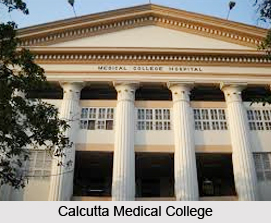 Indian Public Health Association which is commonly known as IPHA is a governmental body operated by the British East India Company and the British Government in India to operate the public health system in India and the eastern circle as well.
Indian Public Health Association which is commonly known as IPHA is a governmental body operated by the British East India Company and the British Government in India to operate the public health system in India and the eastern circle as well.
Registration of Indian Public Health Association
Indian Public Health Association is a professional health organization working for the cause of Public Health in India since 1956. It is registered under Societies Registration Act XXI of 1860.
Objective of Indian Public Health Association
The mission of Indian Public Health Association is to protect and promote the health of the people of India by facilitating the exchange of information, experience, and research, and advocating for policies, programs and practices that improve public health.
Establishment of Indian Public Health Association
The idea of establishing an association of Public Health (Indian Public Health Association) was first mooted out at the All India Institute of Hygiene and Public Health, Kolkata, in 1935.
Permission from British Empire in India
The permission of British Government in India was necessary to create such an association. Most of the health staff of Indian Public Health Association was working under government or municipalities. Hence permission was denied until the Independence of India in 1947. But in British Era, this body worked as the Indian Public Health Association, which is still now operational to look on the health sector of Kolkata and the entire part of West Bengal.
Indian Public Health Association after Indian Independence
After the Independence of India on 15th August 1947, Dr. Ganguly and Dr. S. C. Seal revived the movement of Indian Public Health Association. Indian Public Health Association was inaugurated on 29th September 1956 by Rajkumari Amrit Kaur, the then Union Health Minister, Government of India.
Responsibilities of Indian Public Health Association
The Public Health personalities of Indian Public Health Association who are responsible for the success of the association were Dr. Bidhan Chandra Roy, Chief Minister of West Bengal, Lt. Col. C. K. Lakshmanan, Director of All India Institute of Hygiene and Public Health, Dr. K. C. K. E. Raja, Director General of Health Services, Government of India, Dr. B. C. Dasgupta, Director of Health Services, West Bengal and Dr. T. Lakshminarayanan of Madras. Indian Public Health Association has grown over the years and now has strength of nearly 4,000 members.
Branches of Indian Public Health Association
Indian Public Health Association has 22 branches in India. In Chandigarh, IPHA has celebrated World`s AIDS day 2014 in Tagore Theatre, where they have invited Snehil Sharma`s dance group Adi Shakti Nrityashala and other theatre groups for the cultural show.
Related Articles
Capital Cities of India
History of Kolkata
Kolkata, Indian City, West Bengal
Culture of Kolkata
Economy of Kolkata
West Bengal, Indian State
Monuments in Kolkata, West Bengal Monuments
History of Bengali Theatre
Birla Planetarium, Kolkata
British Empire in India
Impact of British Rule in India
British Military Architecture in India
British East India Company
Dual Government of Bengal, Modern History of India
Monuments in Chennai
Victory War Memorial, Chennai
French War Memorial, Puducherry
Historical Monuments Of Pune
Monuments of Delhi
Mother Teresa
Tourism In Kolkata
The Maidan, Kolkata
Indian Street Theatre
Taltala, Kolkata, West Bengal
British Monuments in India
Monuments of West Bengal
Treatment in Ayurveda
Nilratan Sircar Medical College and Hospital
RG Kar Medical College and Hospital
Kolkata National Medical College
Developments in Medicine, British India
Dibrugarh University
Medical Colleges in India
Medical Colleges in Telangana
Gandhi Medical College, Hyderabad
Medical Colleges in Andhra Pradesh
Medical Conditions during 19th Century



















